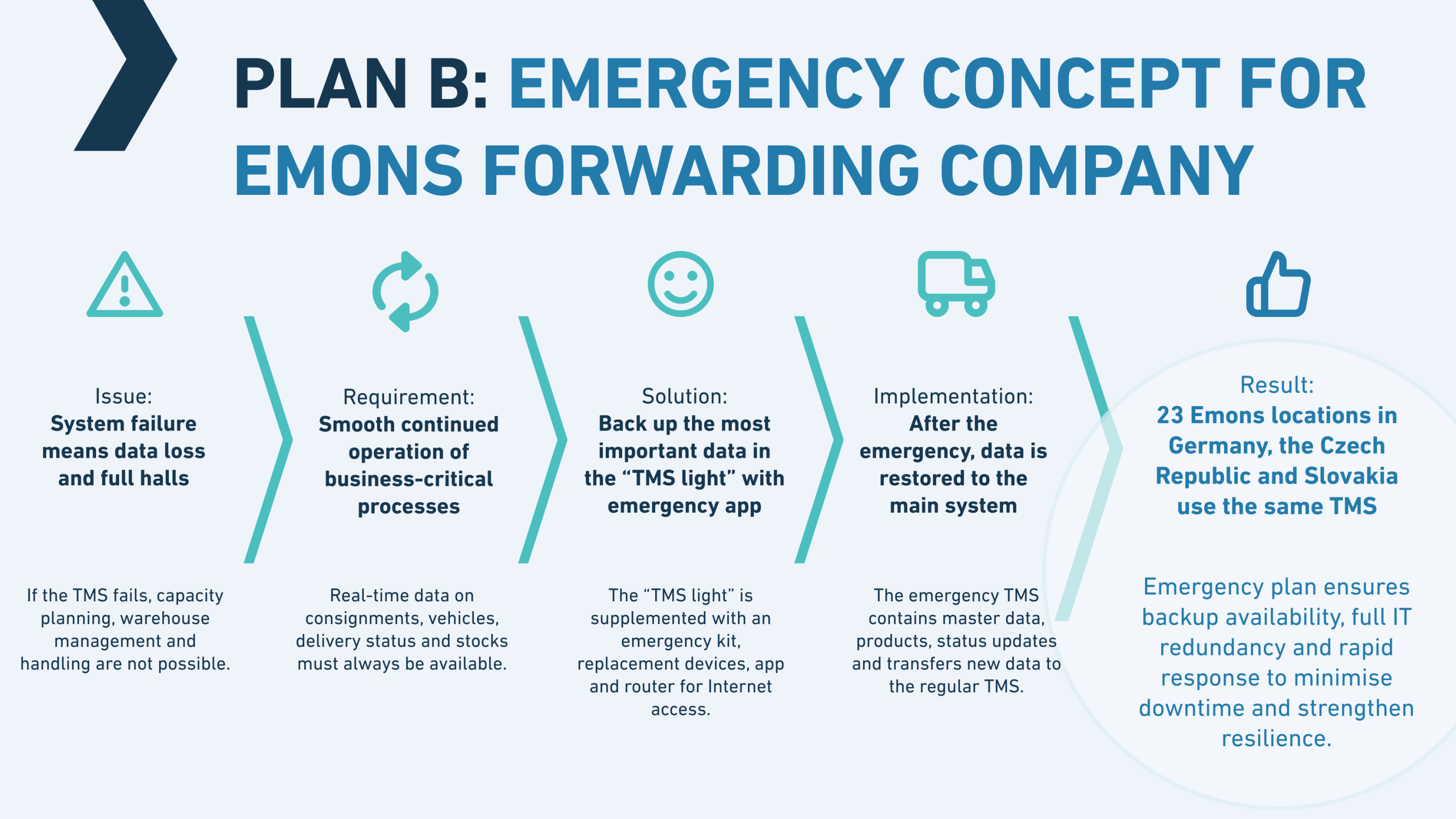They are agile, cute, have reddish fur and love to eat nuts: That’s right, we’re talking about squirrels. Why are we discussing them in an IT and logistics blog? Because they have something that companies can certainly learn from – a functioning business continuity management system!
In IT, business continuity management, or BCM for short, means safeguarding a company’s critical processes in such a way that operations can be upheld even in crisis situations. This is exactly what squirrels do: they diligently collect nuts and acorns and hide them in various places so that they always have a reserve ready in winter. Admittedly, winter is a little easier to predict than a potential IT emergency, but the idea is the same: good preparation is half the battle in a crisis.
If a company’s transport management system (TMS) fails, it is quickly unable to act without BCM and the entire business operation is paralysed – not a pleasant scenario. Whether the whole thing was caused by a server failure, a hacker attack or another event is irrelevant. Without access to the TMS, data exchange with partners no longer works, and it is unclear where which consignments need to go, or on which shelf they are currently stored. In short: chaos breaks out in the warehouse. Companies can avoid this by having a contingency plan: With the help of a back-up TMS and BCM tools such as an emergency app, operations are maintained even in the event of a crisis.
Forewarned is forearmed – it’s not quite as easy as that, but there’s still a grain of truth in the saying. If it is clear which processes are business-critical and must not fail under any circumstances, then they can be protected much better. The first step towards a business continuity plan is therefore a business impact analysis. It records dependencies between different companies and the criticality of individual processes. Based on this, business continuity concepts can be created for emergencies. After all, that’s what a squirrel does: It recognises that it needs food all year round and cannot survive without it. That’s why it looks for ways to bring nuts and co. safely through the winter.
In terms of emergency plans, the old saying applies: You can’t make an omelet without breaking a few eggs. The same applies for squirrels: after all, sometimes a nut gets lost. Applied to our IT processes, this means that the most critical and important business processes should be covered by business continuity management. However, it is quite possible that individual work steps will become somewhat more cumbersome in the event of a crisis, for example if information has to be transferred manually because the scanners are no longer working. But the main goal is: ‘The show must go on!’
The following questions can help with the creation of an emergency concept that allows core business to continue without interruption in the event of a crisis:
- In which cases does the business continuity concept take effect?
- Who triggers emergency operations?
- How will work be carried out in an emergency?
- What equipment (keyword: emergency kit) is required for this?
- How does the return to normal operations work after the crisis?
Then the main task is to practise, practise, practise! After all, even the best concept is useless if nobody knows what steps need to be taken in an emergency and how the ‘new way of operating’ works. This also ensures that the system is up to date and always ready for use.
Of course, companies are not on their own when it comes to creating such an emergency concept. Not only do various IT service providers help here, but the German Federal Office for Information Security (BSI) also provides useful tips on how to approach the BCM process.
With BSI Standard 200-4, it provides practical guidance on how companies can set up a Business Continuity Management System (BCMS) in their own organisation. In particular, BSI 200-4 addresses the overlap between a business continuity plan and the topics of information security and crisis management. For BCM newcomers, the standard offers an easy introduction with its step-by-step model.
The answer is quite clearly: ‘Yes.’ After all, back-up systems can only function if they are not also affected by the IT failure. That's why the BCM software comes from the cloud. During normal operation, it runs as a secondary system and is continuously ‘fed’ with data. This means it is immediately ready for use in the event of a crisis and can seamlessly replace the main system.
The back-up software is complemented by an emergency kit. It contains all the utensils needed for crisis operations. This includes self-sufficient devices such as emergency laptops, routers and mobile phones, thus allowing key business processes to continue.




